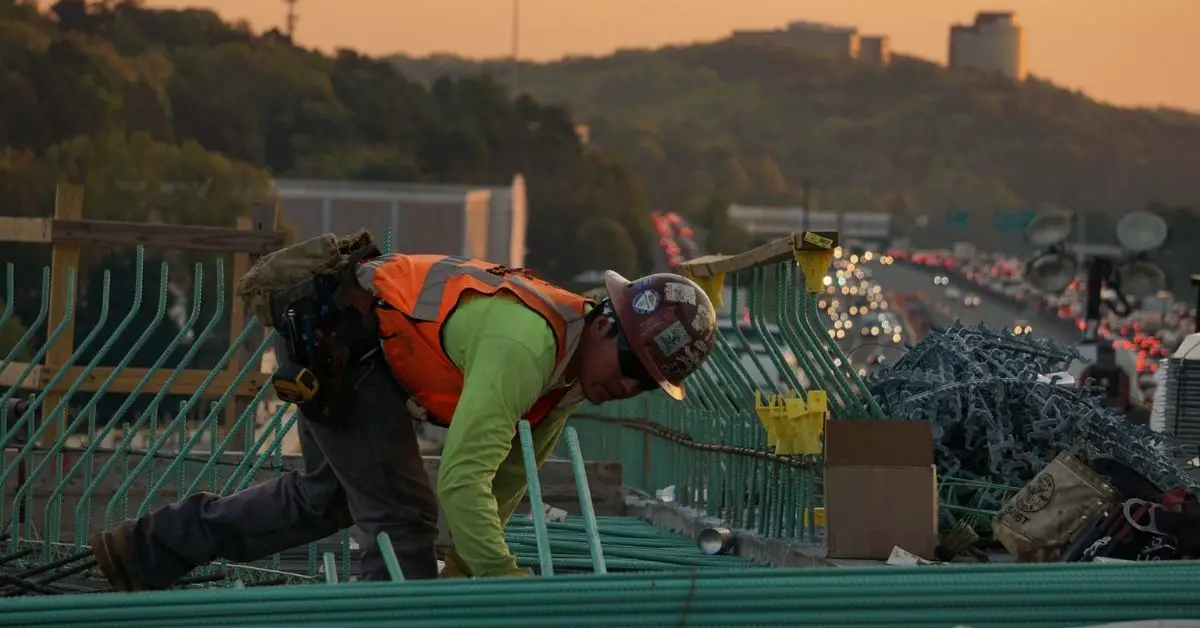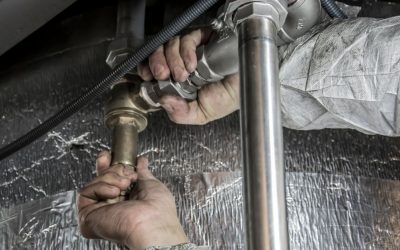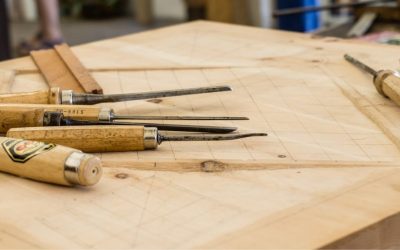Share

The world of welding has drastically changed over the years. There are more tools on the market than ever before, and it can be hard to figure out which ones are best for you.
We have compiled a list of the different types of welding tools that may interest you, including what they’re used for, how much they cost, and an example picture to help illustrate them. With this information at your disposal, hopefully, you will find it easier to make a decision about which one is right for you!
Types of Welding Tools
Here are the different types of tools and equipment that a welder should have!
1. Welding Helmet
A welder can’t weld without a welding helmet. This is the most important tool for any welder as it protects their eyes from sparks and intense light. The lenses also protect against UV rays that may be harmful to one’s health over time, especially those who work outside or in an industrial setting with no shade.
There are different types of welding helmets, such as auto-darkening helmets, pancake welding hoods, and traditional welding helmets. Make sure to choose the right helmet that perfectly fits your needs.
2. Welding Gloves
One of the most important things to invest in is a good pair of welding gloves. You don’t want to end up with painful blisters or burns on your hands because you didn’t wear any protection! A normal glove won’t do, as it will melt and
3. Welding Jackets
This jacket must fit well and provide ample protection at all times, so choose your size carefully before purchasing this item! It should not ride up when you move your arms nor restrict movement of any kind.
If it does, measure again and try another brand/size until you find one that fits perfectly on top of whatever shirt or other wearable layers (if any) you plan to wear underneath during jobsite operations.
4. Mask
Masks are not only necessary for welding, but they can also help keep one’s face protected from sparks and other flying particles.
5. Welding Gloves
Many types of gloves are available for welding, including leather ones that protect the whole hand or just the fingers, depending on your preference.
You might have different needs in terms of protection depending on whether you work with metals that require more heat resistance than others or if you need better dexterity due to smaller-gauge metals being used during a job. A glove might be good enough by itself, so seek out something suitable before investing in multiple pairs!
6. Welding boots
Your shoes should be comfortable and non-slip. You may need to wear steel toe boots for added protection if you work in a high-risk environment, but most people only require something with rubber soles that provide stability when walking on many surfaces, from wet cement to metal grating or catwalks. Near molten materials!
7. Welding Goggles
Goggles are typically necessary for anyone who welds but not always. This is because some people perform other types of metalwork that do not involve sparks flying directly toward their eyes, so they can get by with just a welding mask or helmet if it provides enough protection. Welders need the full-face coverage regardless, though. So be sure to invest in protective eyewear accordingly!
8. Earplugs
These come in handy when the welding work is loud and grating on one’s ears, especially if you plan to wear a helmet for an extended period of time without taking a break.
9. Tape Measure
No matter what kind of industrial task you perform involving metals, having a tape measure close by is always necessary sooner rather than later.
10. Pipe Wrench
This type of wrench is necessary for any welder’s toolbox, and you can find it in different sizes depending on the size and weight of the metal objects that require tightening.
11. Chipping Hammer
A chipping hammer comes in handy when one needs to chip away excess pieces from a welded object or surfaces as well as break free rusted components. It also works great at removing paint from unwanted items!
You might prefer this over sandpaper if your work involves old paint jobs and even new ones should you need to remove something quickly without investing too much time into smoothing out an area with other tools first.
12. Ratcheting Screwdriver Set
Welders often have many bolts and screws to tighten and remove from different surfaces, so a ratcheting screwdriver set is valuable.
13. Clamps & Holders
A welder should always have a good selection of clamps and holders on hand, as these come in handy for securing materials before or during welding. These can also help with the installation of new equipment to be used by other tradesmen, so make sure you stock up, so you don’t run out!
14. Welding Hammer
This tool is helpful when it comes time to remove old pieces that need to be repaired/replaced, such as damaged sheet metal (a common problem for those who work on vehicles).
15. Welding Table
If you need to work with sheet metal, having a welding table can be helpful for holding the piece in place while working on it and also keeping your tools close by!
16. Grinders & Grinding Tools
Using grinders is an essential part of any welder’s job. These are especially important when it comes to removing excess material (such as rust) and smoothing/shaping edges without compromising structural integrity or sacrificing accuracy.
These come in many forms, including handheld units that must be operated manually, but some types use electricity to power small rotary discs that do most of the work for you. This makes them great if you’re already short on time since they require less effort (and fewer muscle movements) than other tools.
17. Welding Magnets
When you need to keep metal in place without having it stick to the surface of your welding table, a magnet is useful for holding it down. There is usually more than one magnet included in a set, so you can use them to hold several pieces at once, which is great for jobs that require working on multiple parts of any given piece simultaneously.
18. Sheet Metal Gauge
If you need to work with sheet metal, having a welding table can be helpful for holding the piece in place while working on it and also keeping your tools close by. In welding, gauges are used to measure the thickness of sheet metal.
19. Soapstone
Soapstones are helpful for marking your work, especially if you need to make a cut or other significant marks on metal that can’t be sanded out. These chalk-like tools typically come in the form of a long piece with an angled end and flat side opposite it. Some people prefer using them while wearing gloves since they facilitate better grip, but you should do whatever works best for you!
20. Metal Brush
A metal brush is an essential tool for any welder because of its many uses. These can be used to get rid of rust, apply flux or even remove impurities from the surface during preparation before welding.
21. Wrench Set
These are important tools to have on hand if you need to make adjustments while working with your materials. They typically come in sets that include several different sizes that you choose based on what’s best suited for each project. You might also want a wrench set specifically designed for use with MIG machines (which currently seems like the most popular choice).
22. Electrode Holders & Electrode Wire
Electrodes are the parts of welding tools that actually produce your weld, so it is important to have a good selection on hand. A standard TIG set consists of two electrodes, but if you’re looking for more accuracy in specific spots or small pieces, there are also electrode wire guides that can be helpful with this task!
23. Welding Rods & Electrodes
These come in many forms but typically refer to rods made from different types of metals (including steel and aluminum) designed specifically for use with certain metal-working equipment like MIG machines. These are generally available as consumables since they wear down over time due to repeated exposure to intense heat during welding procedures. You will want enough spares on hand to avoid running out in the middle of a project.
24. Welding Machine
A must-have when working with any type of metal, a welding machine is used to create the actual weld. There are countless types of these available on the market today, and some may be better suited for certain projects than others, so you should do your research before deciding which one is right for you!
25. Vice Grips
These tools are incredibly versatile and can be used for a number of different tasks. They’re helpful with withholding materials in place, making adjustments to specific parts during welding, or even removing nuts and bolts that have become stuck, so they’re definitely worth having on hand!
26. Square
A square is a helpful tool to have around while working with metal. It can be used to check angles on your welding projects, apply the right amount of pressure when using tools, and even measure pieces before you weld them together!
Here’s additional information with welding tools:
Tips When Using Your Welding Tools
When using your welding tools, it’s important to be careful and wear the proper safety gear for protection. Additionally, make sure you follow all directions provided with any equipment you use.
In addition to keeping a fire extinguisher on hand in case something goes wrong, another good idea is to have a fire extinguisher on hand in case something goes wrong. Always use your tools for their intended purposes and get advice from professionals if you’re not 100% sure how they should be used. We don’t want anyone getting hurt because of incorrect usage!
Taking Care Of Your Welding Tools
To make sure your tools last as long as possible, you’ll want to take proper care of them. One important thing is making sure they’re always clean, which can be done by brushing off any debris with a wire brush and cleaning the metal with water if necessary before storing it in a dry place until ready for use again.
It’s also helpful to apply protective coatings when welding equipment on metals like aluminum or steel since these materials oxidize (rust) easily. This will help keep rust from developing and ensure that all parts stay in good condition throughout repeated uses.
To take care of your welding tools and prevent them from rusting, it’s also important to keep them clean with a wire brush, apply protective coatings by coating the metal parts with water or other liquids. Store in dry places until ready for use again.



0 Comments